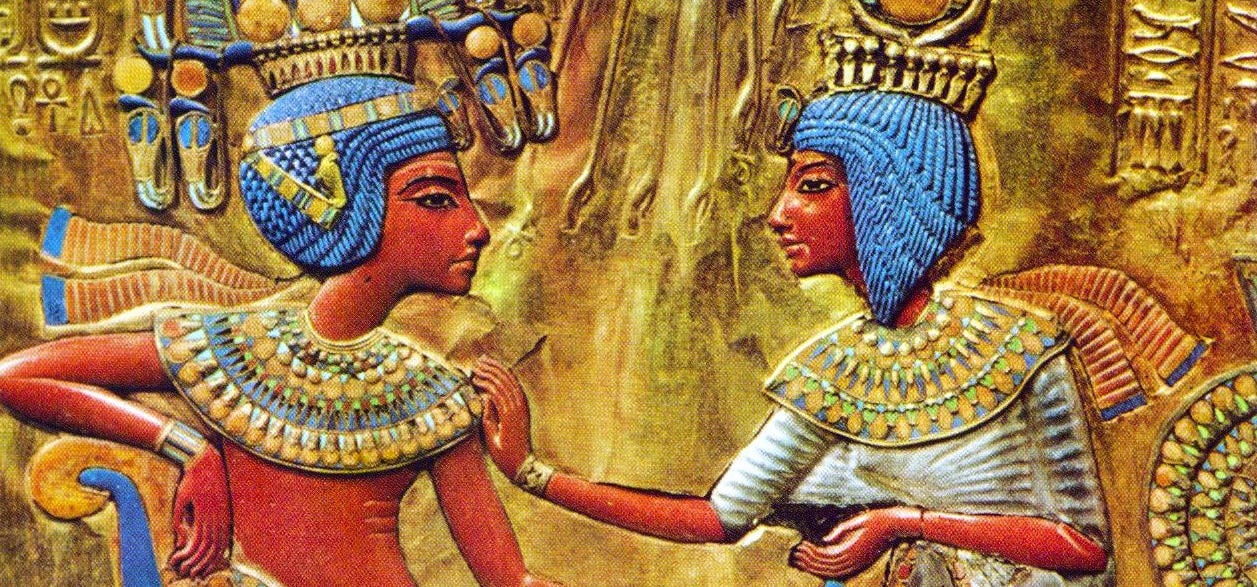The discovery of Tutankhamun's almost intact tomb in 1922 created a furor in world archaeology. Had it not been for this event, it may be that the boy ruler would have remained in obscurity against the backdrop of truly great kings. However, his legacy not only exists, fueled by the discovered treasures, but also clothed in a kind of aura of mystery that stirs the minds of researchers-Egyptologists.

One of the mysteries is the fate of the pharaoh's wife, Princess Ankhesenamon (also known as Ankhesenpaaton), who is present in some ancient images next to the ruler but, after his death, is lost to historians. Where did she go?
Ehnaton's daughter
Ankhesenamon was born into a very influential family of ancient Egypt. She was the third daughter of the pharaoh-reformer Ehnaton and his no less famous wife, the beauty Nefertiti. Probably, the princess was born in Thebes, but later she was moved to Ahekhaton - the center of the cult of the god Aton, the capital city, which existed only about 15 years. This is confirmed by the many bas-reliefs discovered by archaeologists.
Next begins the chaarchy of dynastic ties. Some researchers believe that after the death of Nefertiti, Ehnaton takes as a wife the eldest daughter - Meritaton. After her it is the turn of our heroine.
Ankhesenamon becomes her father's consort and queen of Egypt. To all appearances, not so much the deviations inherent in the now recognized ethics, but the unwillingness to let go the reins of power from the family clan play a role here.
During the reign of Ehnaton in historical documents constantly flashes his co-emperor - Smenkhara. This is a dark horse. Perhaps the king's brother, or maybe his son. In any case, after the death of Ehnaton, Smenkhara becomes pharaoh, taking as his wife the irrevocable Ankhesenamon. This is her second marriage, despite her childhood.
Tutankhamun
As time goes on, Smenkhara dies. Princess Ankhesenamon is only 13 years old when she is given in marriage for the third time. To the eight-year-old Tutankhamun. The story of his reign spans only 10 years, creating more questions than answers. So, it's believed that nothing good came of this marriage. Two tiny mummies of stillborn girls are discovered in the tomb of the boy king - Daughter?
Pharaoh himself dies at the age of 19, possibly from gangrene following a broken leg. Some scholars have speculated murder, but examination of the remains does not confirm this. The young pharaoh's advisor, the dignitary Aye, instantly takes over. There is reason to believe that he is the grandfather of Ankhesenamon, the de facto ruler of the country.
Tutankhamun's funeral is conducted in a hurried manner, without observing the burial traditions of the highest rulers. Ankhesenamon marries Aye.
From this point on, the scant evidence of the woman's life is interrupted. Even the autopsy of Aye's tomb could not shed any light on the matter. The walls of the pharaoh's tomb are decorated with images of Thea, his next wife, but there is nothing about Ankhesenamon. She does not appear in the documents, the tomb is missing. She disappeared, completely and without a trace.
Some evidence suggests that after Tutankhamun's death, Ankhesenamon tried to find protection from the Egyptians' then enemies, the Hittites. For unknown reasons, she felt like a stranger in her own country.
Archaeologists discovered a letter to the Hittite king Suppiluliumas, which, although unsigned, may well belong to the hand of our heroine: ‘My husband died without leaving children. Thou hast many sons. Give me one of them to be my husband. I will not take any of my subjects as my husband.’
The second fact confirming this version is that Suppiluliumas sent his youngest son Zananza to marry the queen of Egypt. On entering the country, the prince himself and his caravan were ambushed and slaughtered.
It is not known if this theory is true, but the story of the wife of several pharaohs, the Queen of Egypt, is very mysterious indeed. Where she went is a mystery.....

















